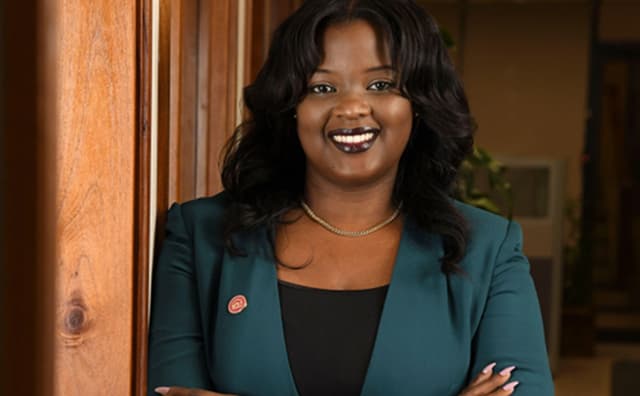Want to know more about how Fujitsu can help you achieve your sustainable transformation?
Comerica:
Achieving the best results from diversity, equity and inclusion strategies
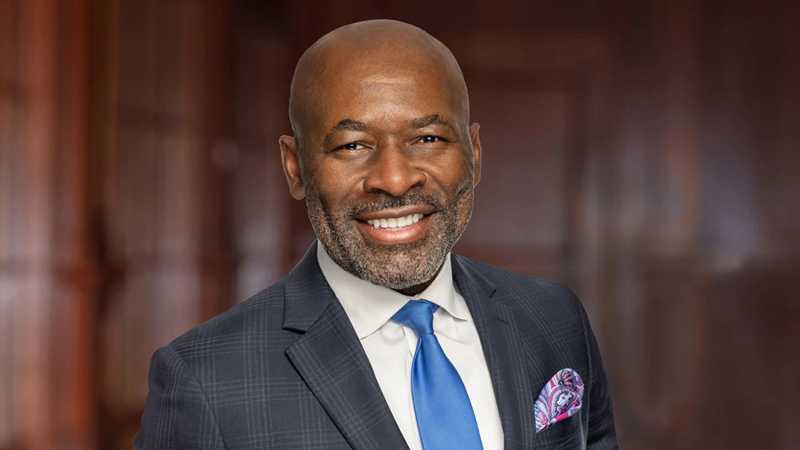
As SVP and Chief Diversity, Equity and Inclusion Officer at Comerica, Nate Bennett is helping to shape and deliver the US bank’s ambitious and inspiring DEI strategy. In an exclusive interview, we explore the scale of the challenge and the successes he’s seen in creating a consistent culture of inclusivity. - by James Lawrence
“Probably the greatest social experiment in the world is happening in corporate America today,” says Nate Bennett, Senior Vice President and Chief Diversity, Equity and Inclusion (DEI) Officer at US bank Comerica, when assessing the scale and importance of the DEI challenge.
By that, he means that organizations of all sizes — from 100 to 100,000 employees and upwards — are comprised of people from the broadest possible spectrum of identities, backgrounds and beliefs, who are trying to put their differences aside and pull together for a common cause. And all this against a backdrop of an increasingly polarized society.
“So it’s extremely hard,” he says, not least because “we’ve failed to give our leaders, colleagues and employees the playbook for how to get it done. We just want them to perform and move forward.”
But he believes there is a pressing moral and societal imperative to ensure that organizations face up to the challenge; hence the heightened level of focus on DEI strategies in recent years, not least in his own organization, which has its headquarters in Dallas, Texas, and operates across North America, generating revenues of $3 billion in the last fiscal year.
“Corporations are essential to the livelihoods of the individuals that live and work in their communities,” he says. “As a bank, there are so many instances in society that we touch, through the products that we provide, and what we provide access to, that has a lasting and direct impact on equity and the ability of individual communities to thrive and survive overall.”
Therefore, for Bennett, there is no looking away. “We are in that critical space,” he says.
Building a successful DEI strategy
Bennett outlines the central pillar of Comerica’s DEI strategy, shaped in response to this challenge: “The core of what we do is around educating individuals, giving broader perspectives, ensuring that we are changing perceptions and biases, and creating positive images for all individuals throughout the organization.”
He breaks this down into three key elements. The first is simply a matter of building a greater understanding of diversity. “We ensure that everyone is aware of the different identities that we have throughout the organization, whether it be physical characteristics or any kind of other identity,” he says.
Second, it’s a case of advancing colleague perspectives and equipping employees with the tools to improve the culture at Comerica. These take the form of actionable anti-racism skills that consist of managing unconscious biases and awareness of microaggressions, understanding aversive racism and how it impacts inclusion — “educating our colleagues must remain a constant in order for effective growth of our culture,” as he puts it.
“Then the third piece is centered around what we’re doing to increase engagement and belonging in the organization,” he says. This, he believes, has a key role to play in our vision of promoting a deeply compassionate, empathetic culture of inclusion.
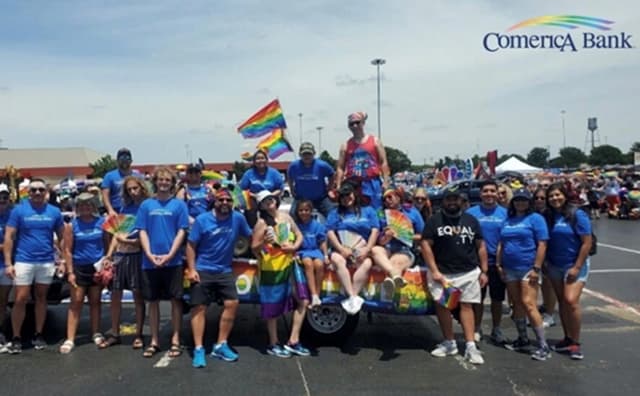 Comerica PRIDE ERG at the Dallas PRIDE Parade
Comerica PRIDE ERG at the Dallas PRIDE Parade
“And we have to do all of this in a way that meets every individual, wherever they are currently,” he adds, acknowledging that each person’s perspective on DEI is likely to be different. “I know that not everybody thinks the same way that I do — we all have different influences that shape our identities and how we think.”
To step up to this challenge, organizations need to establish and maintain a truly inclusive culture to increase a sense of belonging, Bennett says. “We’re social creatures by nature. Humans thrive when they’re part of a community. When you come into a large organization, there is a need to feel you’re part of something, but that’s not always easy.”
Comerica’s solution has been to encourage various groups within the business that are based on people’s specific affinities and passions.
These range from the bank’s African-American network to its women’s forum and PRISM, Comerica’s LGBTQ employee-resource group, as well as function-based groups such as one for the company’s quantitative professionals. “Today, we have 10 such groups, with 19 different chapters,” says Bennett.
DEI comes from the top
Importantly, there also needs to be a strong element of corporate governance to inform, guide, implement and be accountable for the DEI strategy, Bennett stresses. And this should start in the C-suite. “The top-down approach is critical,” he says.
Importantly, there also needs to be a strong element of corporate governance to inform, guide, implement and be accountable for the DEI strategy, Bennett stresses. And this should start in the C-suite. “The top-down approach is critical,” he says.
“That’s our thinktank, where we all have a role in considering what strategies and actions need to be in play, who’s accountable for what, and what measures we are going to have as part of that accountability,” he says. “That foundational piece is critical as the individuals in that group have the biggest influence on making change happen in the organization.”
What’s more, no topic is ever off the table. “We have very contentious, very free conversations. We talk about racial equity, individual identity, culture, values. What is the need of the organization? Where are we missing the boat? What are our opportunities? What’s right from wrong? And what do we do? What are our employees telling us?”
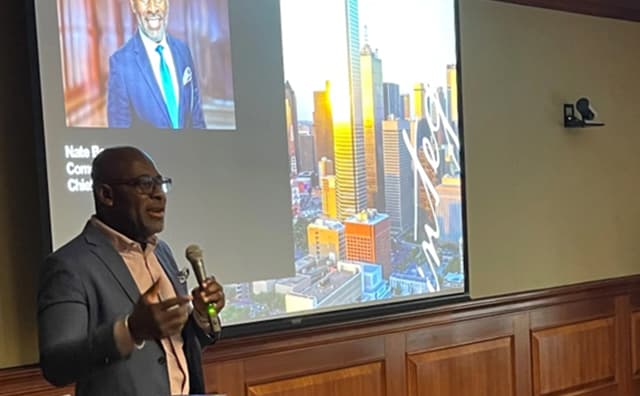 Andrew Buss, Deputy CIO/Public Technology and Innovation for the City of Philadelphia, with members of the innovation team (Photography: courtesy of City of Philadelphia)
Andrew Buss, Deputy CIO/Public Technology and Innovation for the City of Philadelphia, with members of the innovation team (Photography: courtesy of City of Philadelphia)
The scale of the DEI challenge
Notwithstanding the buy-in from the C-suite, maintaining a consistent culture of inclusivity throughout every part of the 7,600-employee organization is one of the biggest challenges Comerica faces, says Bennett.
“Yes, we’re all on the same page, but we all rely on thousands of managers to run their own individual teams with their own environments, with the expectation that they too will advance our culture of inclusion. We want to be one Comerica, we want to do it together, we want to show one face. But we have all these individual pieces that we’re trying to bring together.
“The problem is that you frequently have someone on one side who says you’re not doing enough and another person on the other side who says you’re moving the needle too fast.”
Added to this, there is the issue of improving workforce diversity and representation, says Bennett. He is proud that Comerica has made great strides in this area when it comes to its hiring practices. In one area, the recruitment of BIPOC (black, indigenous and people of color) talent in Comerica's emerging talent programs has risen from around 30% of the annual intake four years ago to 55% in the current year, while 53% of new early career employees are female.
However, as in most organizations, there is still more to do when ensuring all talent have an equitable opportunity to progress through the business, he adds. “We still have opportunity for improvement. We are always asking what we need to do, not only from a system and strategy point of view, but also psychologically or behaviorally to ensure that our policies and processes are free of bias and disparate impact.”
Another major challenge comes from the expectation of employees, suppliers, customers and investors, who all require evidence that the business is running along sound ethical, equitable and responsible principles, says Bennett. “They tell us: if your purpose isn’t there, we don’t want to do work for you or do business with you. And I absolutely think that’s the right thing to do. I love it, because that increases the accountability on corporations to assess, react and change to do the right thing.”
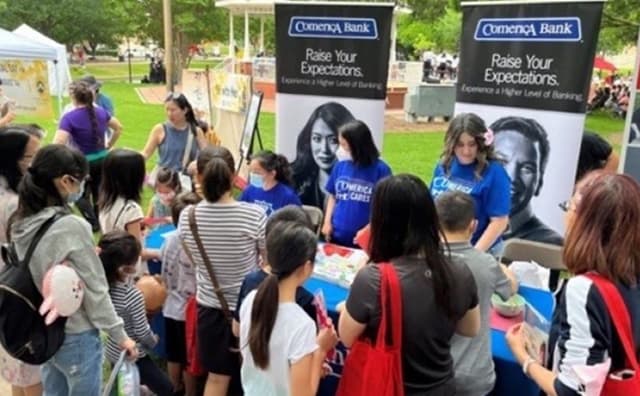 Comerica financial education community
Comerica financial education community
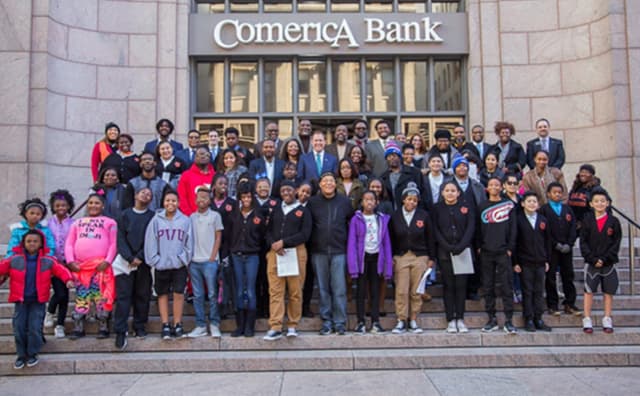 Comerica financial education community
Comerica financial education community
What’s more, the business has seen a large increase in these demands over recent years, particularly from relationship managers needing to provide evidence of the bank’s DEI strategy to compete for business. “And now it’s a regular part of the process when they’re bidding for business. In most cases, we won’t be considered as a partner if we don’t provide that information as a part of the documentation.”
To all such challenges, Bennett applies a straightforward guiding principle to help cut through the difficulties. “We make it simple: we try to focus on what is the right thing to do and what’s best for individuals and the company, and the advancement of equity.”
Reaping the business benefits of DEI
This simple approach has helped to lead the organization to considerable success. “It’s helping us to create meaningful strategies that are creating positive results overall,” says Bennett.
He points to some internal research recently conducted by Comerica, demonstrating strong overall engagement and a positive response to the inclusion culture.
The qualitative assessment consisted of assessing the following: fair treatment, integrating differences, fair consideration, psychological safety, trust, belonging and diversity. Evidence showed an 84% engagement rate based on inclusion within the organization, which represents positive feedback. Areas of strength existed in integrating difference where colleagues of all cultures and backgrounds feel respected and valued, and trust in senior leadership support for DEI in the workplace.
There is also clear evidence that improved ESG (environmental, social and governance) ratings impact a business’s valuation, says Bennett — and its DEI strategy is a crucial component of this. A few examples of policies that Comerica has instigated in response to the ESG imperative include: originating 707 community and economic development loans totaling more than $2.5 billion in affordable housing in lower- and moderate-income (LMI) communities, financial education service in LMI areas, revitalization of LMI areas and economic development for small businesses in LMI areas. All of these, claim Bennett, have not only helped to improve the communities in which Comerica is present, they have also helped to deliver enhanced market performance.
The role of technology in DEI
Technology is also playing a key role in delivering the company’s DEI strategy. One important aspect has been the way it enables more flexible working practices, which often help to support our working parents and others that have significant caregiving responsibilities at home improve their work-life balance.
“The shift to remote working during Covid created an opportunity for colleagues to balance their lifestyles better,” says Bennett. “It moved us to build our WorkBest program, where we have a percentage of our workforce working in-office (Retail Banking Centers), a large percentage of our organization working in a hybrid fashion, either 100% remote or spending two to four days outside of the office. That’s now part of who we are.”
Added to this, the company’s ongoing digital transformation program has instilled a user-centric approach to technology, which in turn helps to support greater diversity both internally and externally. “With this change we are able to develop more equitable technology that fosters advancement and equity for all,” says Bennett.
“We start with the customer now, then we build our technology from that perspective — in terms of what they need, be they women, BIPOC, low income, middle income, disabled, and so on. We make sure we’ve thought about every particular aspect.”
The secret of DEI success
In what must often seem like an impossible job, faced with endless complexity and frustrations, Bennett believes that the key to driving positive change lies in appealing to basic human decency.
“The shift to remote working during Covid created an opportunity for colleagues to balance their lifestyles better,” says Bennett. “It moved us to build our WorkBest program, where we have a percentage of our workforce working in-office (Retail Banking Centers), a large percentage of our organization working in a hybrid fashion, either 100% remote or spending two to four days outside of the office. That’s now part of who we are.”
“Listen to your heart,” he advises others faced with similar challenges. “Almost everyone is good, and most of the time they’ll try to do the right thing. We all have a moral compass where, at a certain level, we know right from wrong — and if we don’t use it, that’s where we tend to get into trouble.
“But if I can get to individuals in here,” he says, pointing at his chest, “that’s when I’ve seen the biggest changes happen.”





